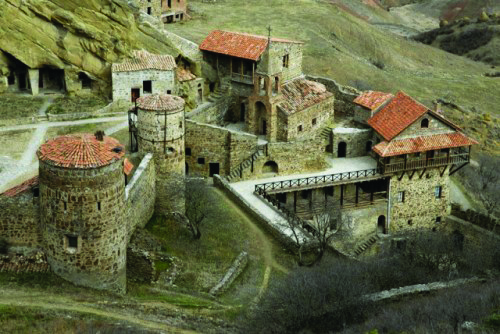Bertubani Monastery

Bertubani Monastery, a monument of Georgian architecture, is one of the cave monasteries of the David Gareja complex.
It was founded in the 12th century. Its notable features include the Hall Church of the Virgin and the refectory, whose walls were decorated with wall paintings in the early 13th century. Due to the Mongol invasion in the first half of the 13th century, the painting school of Bertubani Monastery was destroyed, and by the end of the 13th century, the monastery was completely abandoned. Monastic life resumed here only in the early 18th century but was again stopped in 1707. The monastery was active again from 1716 to the 1740s. Starting from 1768, as a defunct monastery, it was placed under the jurisdiction of the bishop of Ninotsminda. The monastery was not active in the 19th century. The painted works of Bertubani Monastery have preserved frescos of King Tamar and Lasha Giorgi. In the refectory, there are scenes from the life of David of Gareji - ("Lukiane milking the deer"). This painting is a peak of the Gareji artistic school. Along with local traditions, it clearly reflects the general characteristics of Georgian monumental painting of that period.
A large portion of the church's frescoes have been destroyed. Over the years, during expeditions, the remaining fresco fragments were collected, moved and preserved at the Shalva Amiranashvili Art Museum in Tbilisi.
Literature: ლ ო მ ი ნ ა ძ ე ბ., გარეჯის სენიორია, წგ.: ქართული ფეოდალური ურთიერთობის ისტორიიდან (სენიორიები), [ტ.] 1, თბ., 1966.
A. Volskaia


